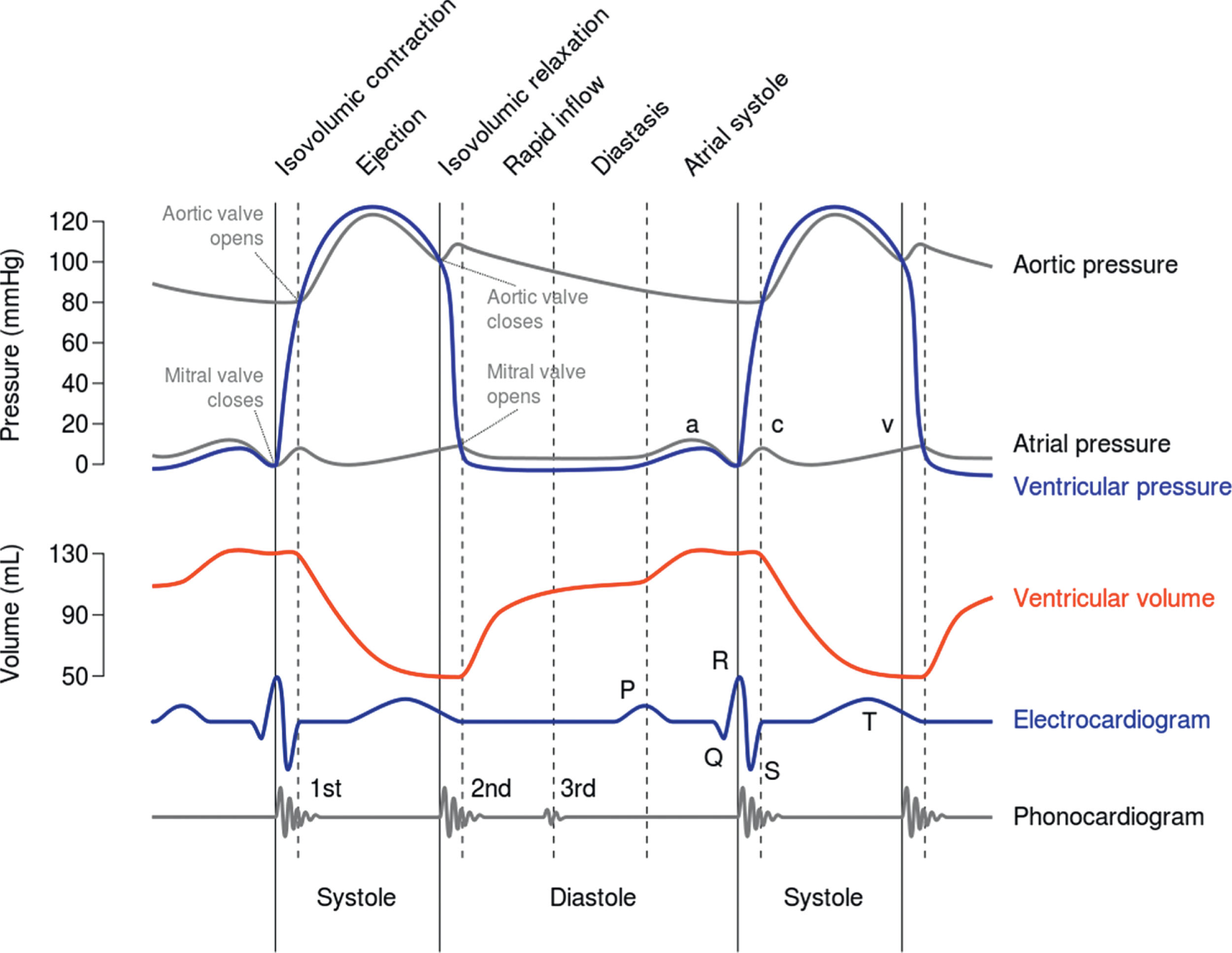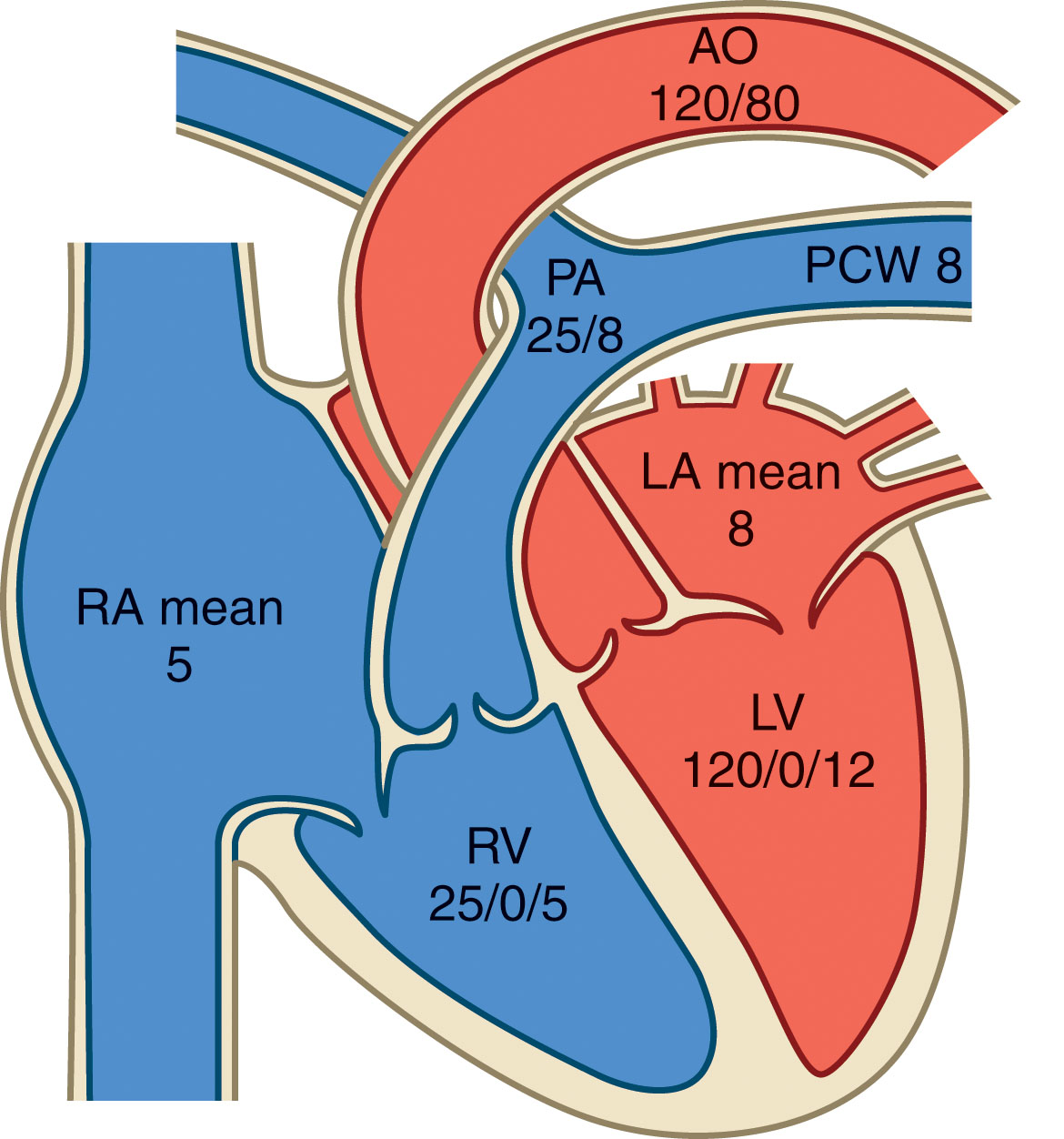Physical Address
304 North Cardinal St.
Dorchester Center, MA 02124
On completion of this chapter, you should be able to:
Understand the fundamental concepts of hemodynamics as applied to ultrasound
State basic knowledge of the cardiac cycle, normal intracardiac pressures and volumes, cardiac output, stroke volume, and its mechanisms
Describe the principles of blood flow velocity profiles, how they are displayed, and how they are evaluated by Doppler ultrasound
Demonstrate knowledge of how to apply Doppler ultrasound to calculate pressures, velocities, and output
Hemodynamics is the study of the forces involved with blood flow and circulation. This chapter focuses on blood flow and circulation as it moves through the body. It is important to understand hemodynamics because the forces involved with blood flow and circulation allow us to answer important questions regarding a patient’s condition, such as cardiac output, right ventricular systolic pressure (RVSP), and degree of valvular stenosis or regurgitation. Doppler principles can be applied using ultrasound to indirectly measure such information.
Some basic terms that are used frequently throughout this chapter include pressure, volume, and velocity. Pressure is defined as the exertion of force on a surface by an object or a fluid it is in contact with, or the force per unit area. Pressure will be used in the context of the force of fluid per unit area. Volume is the amount of space occupied by a three-dimensional object as measured in cubic units such as cubic centimeters (cm) or milliliters (mL). Velocity is the speed with which something moves in a given direction.
Before discussing basic principles of blood flow, one must review how blood moves through the heart. Blood flow enters the heart through the vena cava (superior and inferior) into the right atrium, through the tricuspid valve, and into the right ventricle (RV). From the RV, blood travels to the pulmonary circuit through the pulmonary valve and pulmonary artery (PA). The PA bifurcates, and blood flows through to the pulmonary capillaries and circuit, eventually back to the pulmonary veins. The pulmonary veins bring blood into the left atrium (LA), through the mitral valve, and into the left ventricle (LV). Blood leaves the heart through the aortic valve and aorta to the systemic circulatory system.
The cardiac cycle can be best described by the Wiggers diagram ( Fig. 31.1 ). This diagram shows the interaction of pressure and volume changes with electrical and mechanical systole and diastole. The two major components of the cardiac cycle are systole and diastole. Within these two major components, there are six minor components of the cardiac cycle; systole can be divided into isovolumic contraction and ejection, and diastole consists of isovolumic relaxation, rapid inflow, diastasis, and atrial systole. During systole, the volume in the ventricles decreases as the ventricular and aortic pressure rises. Throughout diastole, the pressures in the ventricles stabilize while the ventricular volume gradually increases.

As shown in Fig. 31.1 , the pressures in the cardiac chambers are constantly changing throughout the cardiac cycle. Fig. 31.2 shows normal pressures in the various cardiac chambers. It is important to remember that there are ranges of pressures, both normal and abnormal, but these are typical. In both the right and LVs, the pressure in early diastole drops to 0 mm Hg (middle number) and then slowly rises. Note that the right and left atrial pressures are a mean or average over the cardiac cycle. Pulmonary capillary wedge is a substitute for left atrial pressure. Pulmonary capillary wedge is obtained using a Swan-Ganz catheter primarily in intensive care settings.

The average pressures in each cardiac chamber, which can be measured directly through cardiac catheterization or indirectly through Doppler ultrasound, are as follows:
Some basic aspects of blood flow as it relates to the heart include cardiac output, stroke volume (SV), preload, and afterload. Cardiac output (CO) refers to the amount of blood pumped by each ventricle in 1 minute. It is the product of SV and heart rate (HR). The average CO for adults is 4 to 8 L/min. Cardiac output has a direct effect on blood pressure; as the cardiac output increases, so does the blood pressure. Stroke volume is the volume of blood ejected by the ventricles with each contraction. Any effect on SV or HR affects the cardiac output. Preload is the degree that the muscle fiber stretches before contraction (end-diastole). It can also be considered the diastolic filling or ventricular end-diastolic volume and pressure. Preload is largely affected by the ventricle’s ability to stretch and relax. Afterload refers to the aortic arterial pressure and vascular resistance the ventricle must overcome to eject blood or any resistance against which the ventricle must pump in order to eject its volume. CO can be measured directly through cardiac catheterization or indirectly through Doppler ultrasound.
Become a Clinical Tree membership for Full access and enjoy Unlimited articles
If you are a member. Log in here